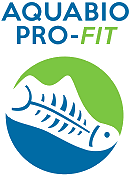Commercialisation of fish based nutritional supplements face barriers mostly related to the smell and taste of such products. This topic is analysed in detail in another section of this training module (M1U1). Aside from the barriers, there are many opportunities. Firstly, the fact that fish industry side streams can be used for protein and oil extraction is a big opportunity as it is a cheap and sustainable source of raw materials. The health benefits of fish proteins are more and more appreciated by consumers and such products containing essential amino acids and bioactive peptides are attracting greater consumer trust. The same applies for fish oil, where an increased consumption of omega-3 fatty acids DHA and EPA is expected, as a means to mitigate heart disease and other illnesses. The fish collagen and gelatine market have also potential opportunities as consumer health awareness enhances the growth in the functional food and cosmetics (cosmeceuticals) markets. Increased evidence of the health benefits and the potential in disease prevention give also more opportunities for market development of trusted collagen sources.
The category of fish proteins and protein hydrolysates includes Fish Protein Concentrates (FPC), fish hydrolysates, bioactive fish peptides and other bioactive compounds found in fish. The global protein ingredients market size, which includes protein from animals, fish, and plants, was valued at US$25.62 billion (approximately €22.1 billion) in 2016 and is expected to increase 7% annually from 2016 to 2025. The market for protein products is driven by various factors, such as obesity and sports. Proteins may be substituted for fat and sugar in food products, which thus can be marketed to obese people as a nutritional and healthy product that may also help in reducing weight. The demand for such products is expected to grow as the levels of obesity continue to rise. Furthermore, there is an increasing consumer interest in protein products due to the evidence that they support body building and keep muscles healthy and active as people age.
Fish oil is a major source of the omega-3 fatty acids, docosahexaenoic acid (DHA) and eicosapentaenoic acid (EPA), which play an important role in regulating body functions and health. It is reported that there is a growing demand for fish oil as a nutritional supplement, due to low consumption of omega-3 fatty acids in Western diets. Within this category, 30 products in the market have been identified. The global fish oil market is expected to increase from US$2.22 billion (€1.91 billion) in 2016 to reach US$3.69 billion (€3.18 billion) in 2025.
Collagen products that can be found in the market are divided in three categories: native collagen, gelatine, and collagen peptides. There are 33 competing products already launched in the market. In 2017, fish collagen dominated the market due to the presence of proteins, essential fatty acids, minerals, and vitamins. Marine collagen market is estimated at US$620.3 million for 2018 and is expected to increase at US$897.5 million by 2023.






